Entwined Histories: Fouzia Dastango
Birth photographer Urshita Saini and dastangoi artiste Fouzia Dastango both embody their home city’s dynamism and cultural eccentricities. Step into Lodhi Garden and a historical haveli, as Verve experiences parts of Delhi that are intrinsically linked with the work they were born to do…
“These parts are erupting with stories.”
That she was born into the same neighbourhood as Mir Baqar Ali, the last practitioner of the dastangoi tradition in Old Delhi is not a mere coincidence, says Fouzia Dastango. “I think it’s fate,” she says, her eyes lit by a gratuitous winter sun. “When I remember that, I feel like I was right in choosing what I wanted to do.”
It is warm and the usual beautiful mania of Old Delhi beckons as I walk out of the Jama Masjid metro station. It is an unusual thing: to be transported from the newer parts of the city to those built more than a thousand years ago. This is where Delhi gets its oldest culture, where the city’s fondness for kebabs and long-winding poetry can be traced back to, where kachori stalls line every street, where Urdu was born. Its residents are unlike any other: complete with the rhythm that its buildings and lanes exude. “This is a civilisation of its own,” says Dastango, when we enter Roshanpura, on Nai Sarak, where we will be spending our day, and I am ready with questions about the part of Delhi I love most but know least about.
As her name suggests, she is a dastango, an artiste who is associated with the ancient Urdu form of storytelling that first emerged in the 16th century. Dastangoi was born in Old Delhi in the court of the Mughal emperors; it presents the oral storytelling of fables and sketches in front of a seated audience. When the art form first took shape, stories were told from Tilism-e-Hoshruba, a collection of fantastical tales. In 2006, it was revived again by dastangos Danish Hussain and Mahmood Farooqui, whose contemporary lineage Dastango is a part of.
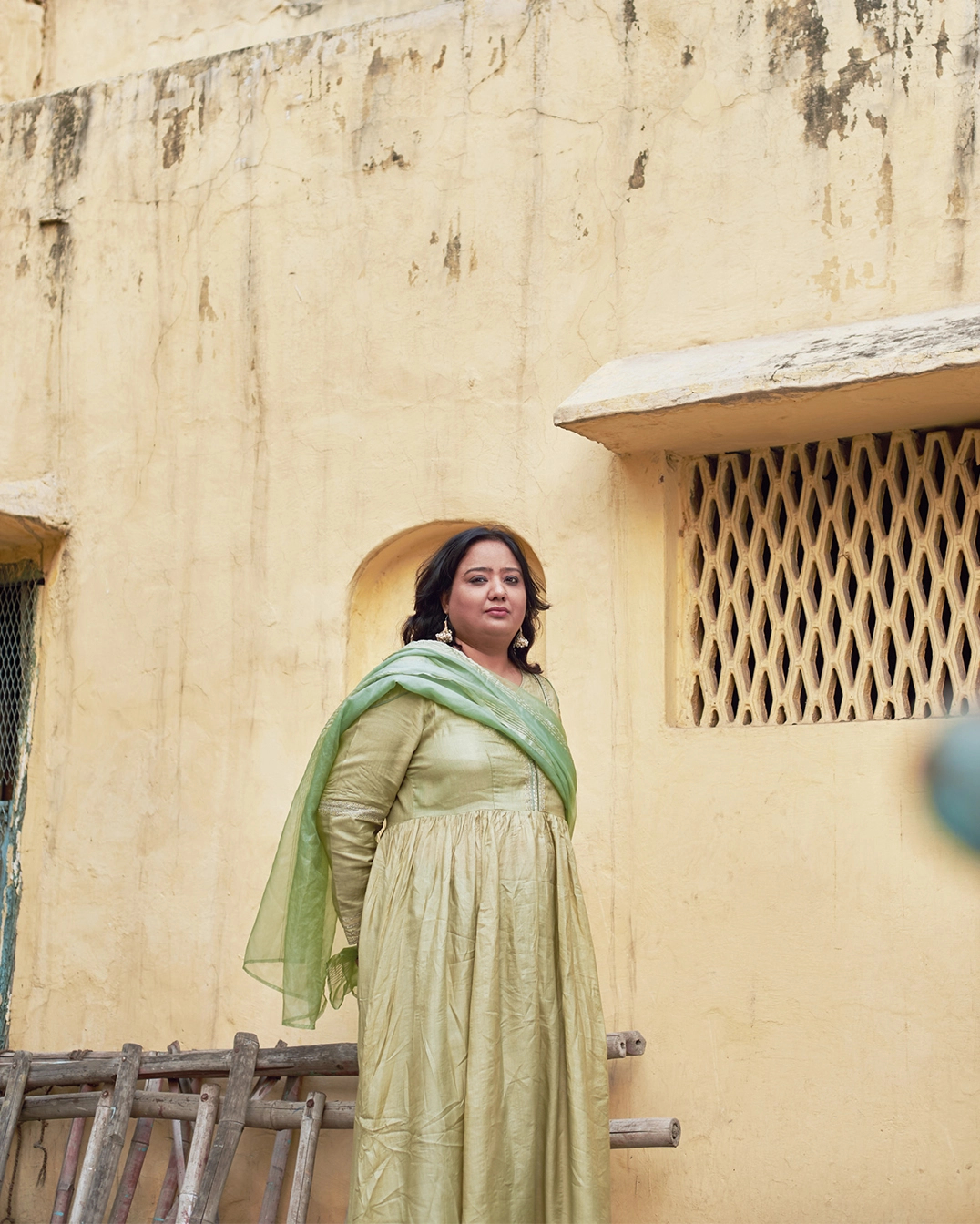
“A friend who knew about my love of literature and stories once told me about Farooqui and Hussain. He said, ‘Fouzia, you should do this,’” she recounts, as we walk towards Nai Sarak in Old Delhi. “In 2006, they became my ustads or teachers, and I began to learn.”
Nai Sarak is the connecting road between Chawri Bazar and Chandni Chowk — a central and crucial part of Shahjahanabad, the original name for the old city built by the beloved, tenacious emperor Shah Jahan. We pass a line of shops that all sell paper and stationery, which suddenly transforms into a well-regulated line of shops selling bright pink fabrics, red salwar suits studded with gold. When we walk into Roshanpura, a historical enclave of the Mathurs, everything suddenly turns quiet. We are now in the intimate gullies that were built centuries ago.
When we enter the house of Ashok Mathur, Dastango’s friend under whose hospitality we are going to spend the day, I look up at the walls — pale yellow with bright blue doors, enclosing a large aangan or courtyard that speaks of countless meetings held in it through generations. Mathur, a historian and ardent lover of the old city, points to the sky and says, with remorse, “Earlier, you could see far and wide from this courtyard. Now everyone is building tall buildings here.” Like dastangoi, the courtyard is a peek into a Delhi not many people see but only read about in books. These parts of the city have flown from the grasp of exuberant kings to that of dominating British officials. This is what sets it apart from the rest; these streets and shops have been witness to the capital’s grand but tumultuous history.
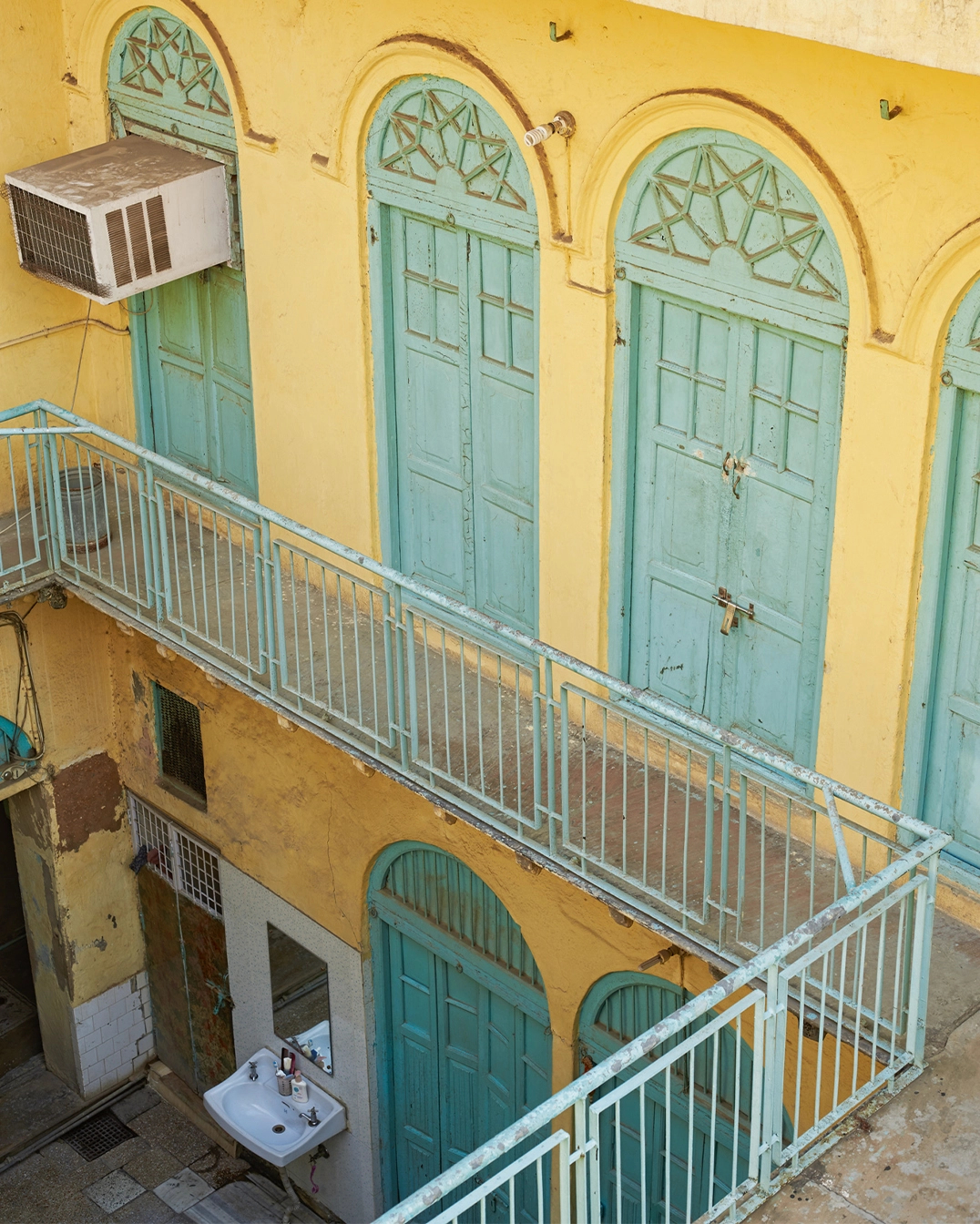
Dastango says, “My training in dastangoi began with my growing up and living in Old Delhi. These parts are erupting with stories.” Today, she has done more than 150 shows around the country, and continues to be the only woman who has popularised the art form of dastangoi in contemporary times. “In history, I’m sure there were other women,” she says. “But no one writes about them — do they? I imagine they must have been in homes, in courtyards, telling stories of neighbours, vegetable sellers. Women are great storytellers — think about your own grandmother and mother.”
Dastango was born in Pahari Bhojla, a community in Delhi 6, to a household of many. She is one of two siblings, and talks of vivid childhood memories of people in the house, kormas cooking, a handi or pot, full of fragrant mutton that she says was never empty. “Back in the day there would always be people streaming in and out of your house — giving you the latest news, telling you if a new place has opened up nearby.” She says. “It was a very communal way to live.”
As a young girl, Dastango would visit the Sunday book market with her mother and buy magazines in Urdu and Hindi like Nandan, Champa, Umang and Khilona. The next day, when she went to school, she recited the stories she had read to her friends. “They would always pester me to tell stories, never reading the magazines themselves!” she says. “They would say, ‘Fouzia, the stories are beautiful the way you tell them.’ In a way, that was how I became a dastango”. Her love of listening to different dialects added to this, especially being in the midst of karkhandari zubaan (or the dialects of the people that worked in small, local industries). “Karkhandari is a language that is so alive, and it’s so specific to Old Delhi,” she says, as she begins to narrate some typical phrases. “Miyan, main subah kabootar uda riya tha (I was flying my pigeons this morning — a saying that expresses a tragic happening), this is the rhythm of the language, it has a local ring and sound.”
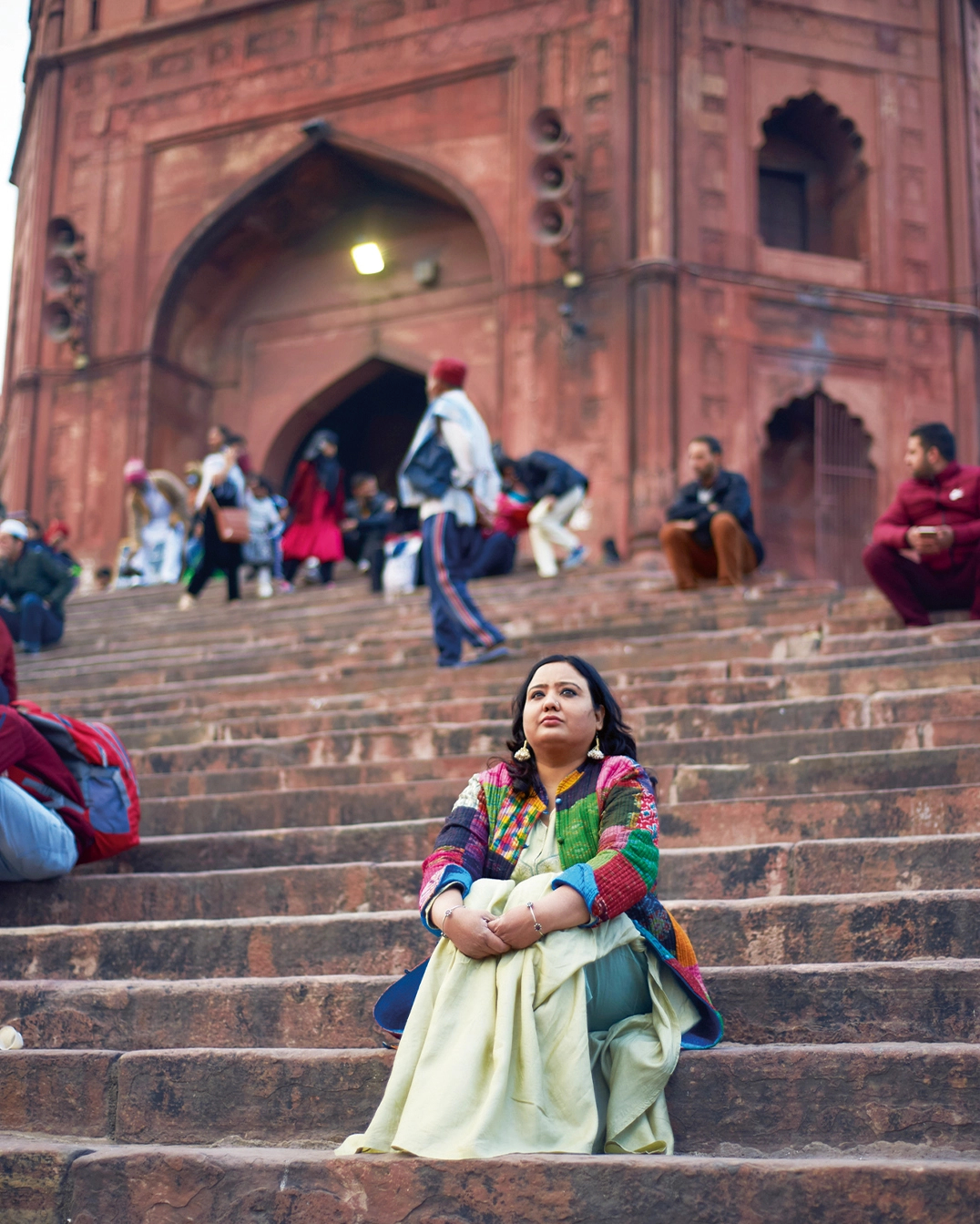
According to Dastango, the languages and old dialects have rhythms of their own. They evade formalisation, categorisation and are suspended in mid-air as if they could be imaginary and real at the same time. Dastango comes in the same spirit — she is not here to explain but to tell the stories of the nooks and corners of Old Delhi, of its uncanny music. “Stories are written about kings and queens,” she says. “But nothing about the lovelorn women and the mad men of the streets of the old city,” she says. “The people in my stories are real people; it is their everyday lives that I like to talk about.”
As she sits between the arched walls of the house, Dastango talks with Mathur about the various languages that inhabited their young life. “‘Abbe!’ — the classic Delhi slang — comes from the people of the streets,” says Mathur. “There is intimacy in language here, it is highly informal and there is no clear divide between love and insults, they all flow into one another.” The characters Dastango describes embody this. We watch birds perch on the terrace of the house, a patch of blue sky above us, when I ask Dastango to tell us her favourite story. Ghummi Kebabi. The story, written by Ashraf Subuhi Dehlvi, is about a kebabi or kebab cook in the streets of Old Delhi.
“Dehlvi loved the lanes and the individuals of the old city, which Mir Baqar Ali brought to life with his khake or literary sketches Dilli Ki Chand Ajeeb Hastiyan (which translates to “a few rare characters of Delhi”).
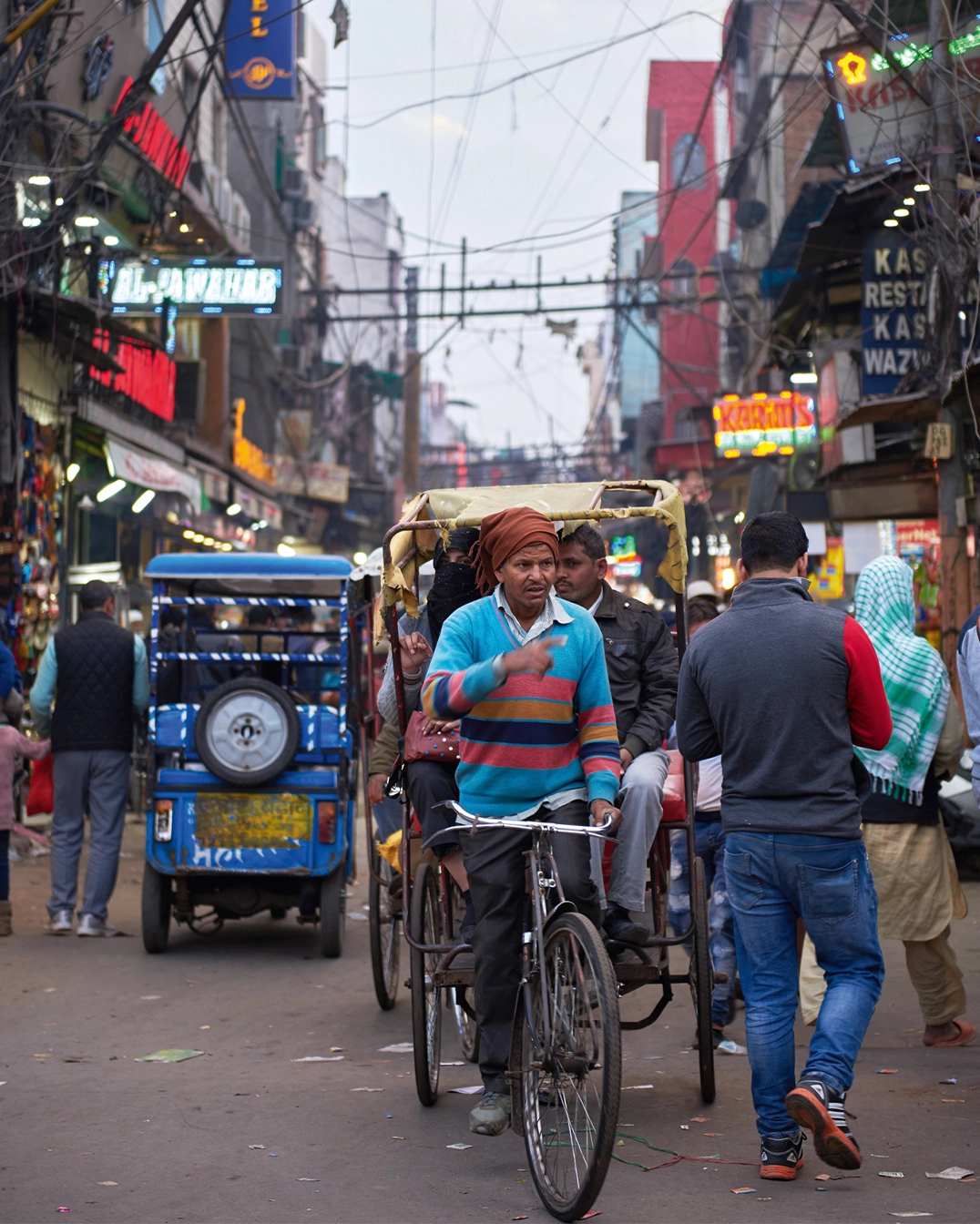
While narrating the story of Ghummi Kebabi, Dastango transforms into the various characters gathered at the kebab stall. A dastango doesn’t merely narrate but brings all the dimensions of a character to life: with their way of speaking and body language, an atmosphere is created through which the listener is transported to a different world. Zubaan-e-Dilli, a language consisting of characteristic lingos and rhythms attuned to those of Delhi, is a common presence in the stories of the capital.
“A kebabi is not just about the kebabs,” she says, when she emerges from the character and slips back into real time. Dusk has begun to envelop the sun-soaked verandah in Mathur’s house.
“When people go out to eat, they go for the company. In this story, they went to the kebab stall for the conversation, the kebabi’s zubaan ka chatkaara or ‘way with words’. A dastango’s job, my job, then is to bring characters like Ghummi kebabi to life. Immortalise them.”
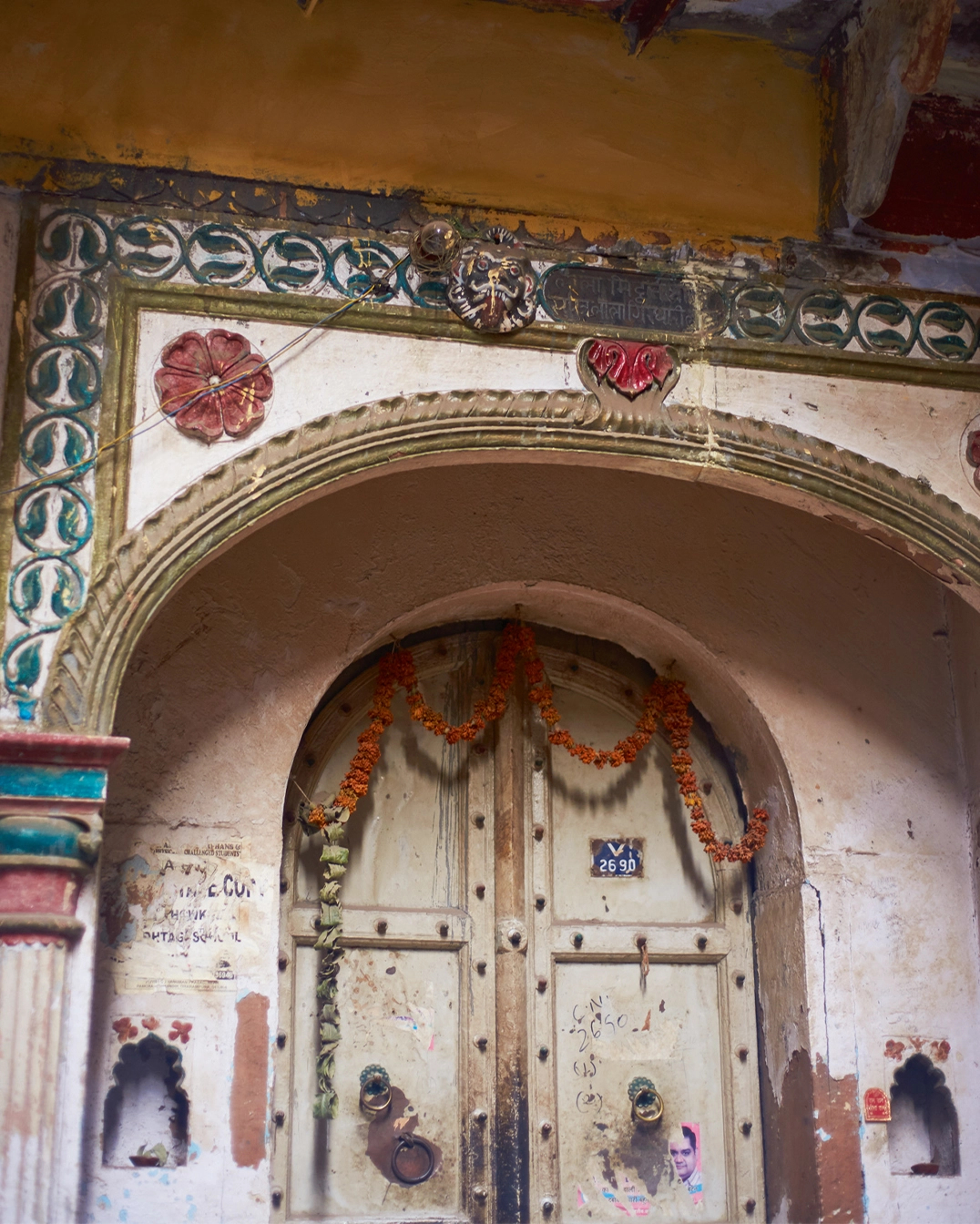
As the sunshine becomes sparse in the courtyard, we move upstairs to catch some of the sun’s last rays.
“Nowadays, people believe that buying paintings and magazines for their living rooms and occasionally visiting a monument is culture,” Mathur says. “But it is more than this. It is always moving. It is the people who make culture, so if they are not represented well, then think about it — what culture will remain? What Fouzia does is important, she is the only brave one representing Old Delhi.”
Dastango throws her head back and laughs at the compliment, but agrees with Mathur. “When I started out, I didn’t have a big, fancy profile. In the arts world in Delhi, it is all about who taught you, which university you went to, what family you’re from,” she says. “I didn’t have this. I just did it because of the stories that were driving me. It was like they were in my blood! And there was the added struggle of being a woman in what people called a ‘man’s profession’,” she adds when asked about initial challenges. “People were used to seeing male dastangos, it is what they would expect, so being a woman in the same line was difficult. Additionally, dastangos are naturally expected to be loud and boisterous, but women, while telling a story with energy, are expected to be docile and feminine. It was a challenge, I felt — to maintain this balance.”
As we talk, we venture into the streets for a snack and end up on the stairs of Jama Masjid, where dastangoi first began. The steps are crowded with mosque-goers, along with the residents of Old Delhi who have come out to talk, meet friends and drink chai as the sun sets behind the structure’s ancient walls, where poets once roamed and larger-than-life rulers reigned. “I feel that people have stopped listening,” says Dastango, looking around with both familiarity and fondness. “Humans are inherently emotional beings, we want to listen. Dastangoi is about just that. It’s not a linear experience. It addresses the fact that listening to stories, knowing about the lives of others is an important part of being human. I want to bring that back.”
Read the first part with Urshita Saini here.